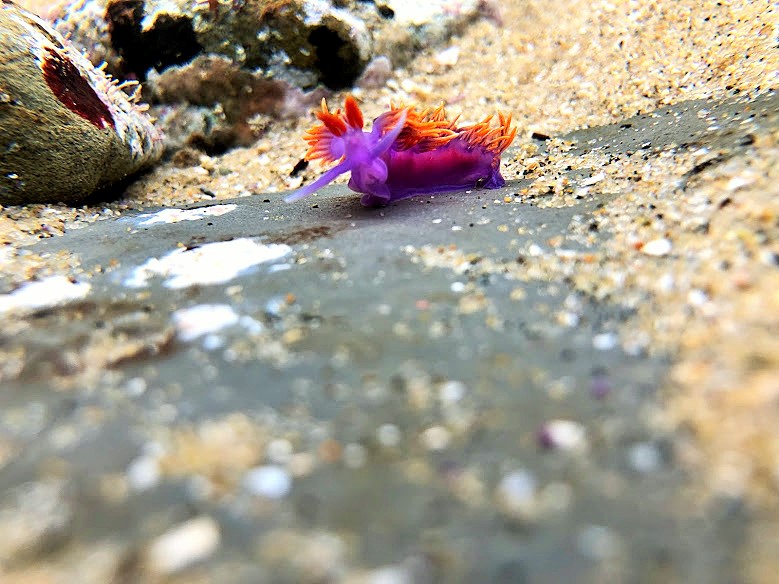
NPS Photo/Nicole Ornelas - Spanish Shawl nudibranch crawls around on the rocky bottom of the tidepools.
The Spanish Shawl is also capable of swimming. When they release from the rocky substrate, they fold their foot along the midline to increase their lateral surface and then begin bending back and forth in a rhythmic fashion propelling themselves through the water.
Spanish Shawl lives subtidally to depths up to 27 meters. This nudibranch, like many other sea slugs, is hermaphroditic. However, self-fertilization rarely occurs and mating will occur only when another nudibranch is in the vicinity. The reproductive organs are located on the right side of the nudibranch and both will pass sperm sacs through their genital pore to fertilize eggs. The eggs are deposited on kelp in a gelatinous, pink ribbon-like masses in late fall.

NPS Photo/Nicole Ornelas - Spanish Shawl nudibranch crawls around on the rocky bottom of the tidepools.
So, as you explore Cabrillo’s intertidal zone keep an eye out for this flashy nudibranch. The purple and orange fringe (cerata) combination will have you clapping a Flamenco rhythm with excitement in no time!
